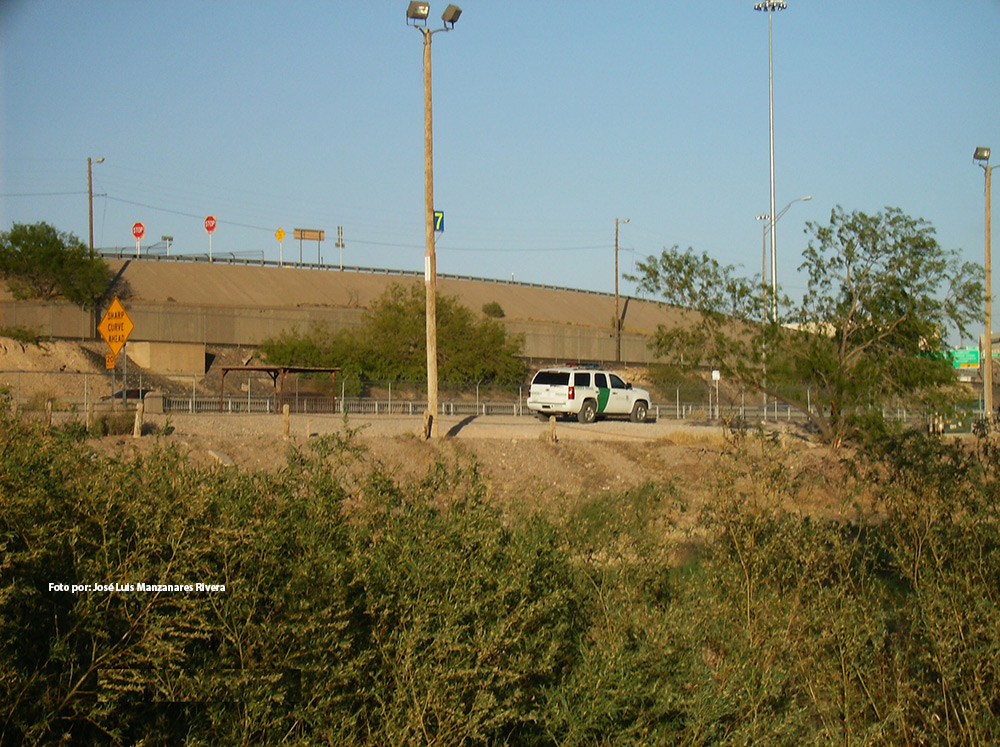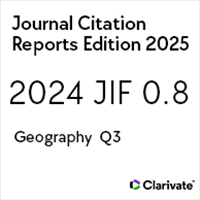Los México-americanos en San Antonio, Texas: Análisis de su inserción en autoempleo formal
Mexican Americans in San Antonio Texas: An analysis of their insertion in formal self-employment
https://doi.org/10.21670/ref.2015.31.a07
Palabras clave:
empleo, Geografía Humana, mexicanos en Estados UnidosResumen
Este trabajo analiza la inserción de la población de origen mexicano en el mercado laboral en San Antonio, Texas; en particular, responde a la interrogante sobre los determinantes del empleo en empresas propias formalmente registradas. La metodología analiza microdatos de la encuesta americana de comunidades (ACS, por sus siglas en inglés) mediante la herramienta estadística de estimación logística. Los principales resultados indican que atributos como el dominio del idioma inglés o el origen de la persona podrían contribuir al entendimiento de la inserción en el mercado laboral de la población de origen mexicano que vive en Estados Unidos y no necesariamente cons tituyen barreras para la inserción en el mercado laboral bajo la categoría de autoempleo en ciudades de migración tradicional como San Antonio, Texas.Abstract This paper analyzes the insertion of the Mexican population in the job market in San Antonio, Texas. In particular, it responds to the question of what determines employment in individual, formally incorporated businesses. The methodology analyzes microdata from the American Community Survey (acs) using a logistic statistical estimation tool. The main results indicate that attributes such as command of the English language or an individual’s origin could contribute to an understanding of job market insertion for the Mexican population living in the U.S. and do not necessarily constitute barriers for labor market insertion in the self-employment category in cities with traditional migration such as San Antonio, Texas.
Citas
Arreola, D. (1987). The Mexican American Cultural Capital. Geographical Review, 77(1),17-34.
Barros, M. (2007). El matrimonio y las pequeñas empresas comerciales. El caso de los salvadoreños y mexicanos en Los Ángeles. Revista Mexicana de Sociología, 69(1), pp. 109-138.
Becker, G. S. (1975). Human Capital: A Theoretical and Empirical Analysis, with Special Reference to Education (2da ed.). Cambridge: NBER.
Chiswick,B. R. (Junio, 2008). The Economics of Language: An Introduction and Overview. (Documento de debate IZA No. 3568), The Institute for the Study of Labor, Bonn.
Chiswick, B. R. (1990). Speaking, reading and Earnings among Low-skilled immigrants. Journal of labor economics, 9(2), 149-70.
Cuesta, M., Verduras, C. y Carcedo, J. (2008). Commuting times: Is there any penalty for immigrants? Urban Studies Journal Limited, 47(8), 1663-1686.
Donato, K. M. y Blake, S. (2012). Shifts in the employment outcomes among Mexican migrants to the United States, 1976–2009. Research in Social Stratification and Mobility 30(1), 63–77.
Donato, K. M. y Massey, D.S. (1993). Effect of the Immigration Reform and Control Act on the wages of Mexican migrants. Social Science Quarterly, 74(3), 523-41.
Duncan, B., Hotz, V. J. y Trejo, S. (2006). Hispanics in the U.S. Labor Market. En M. Tienda y M. Faith (Eds.), Hispanics and the Future of America (pp. 228-290). Washington, DC: National Academies Press.
Fairlie, R. W. y Woodruff, C. (2004). Mexican Entrepreneurship A Comparison of Self-Employment in Mexico and the United States. En G. J. Borjas, (Ed.), Mexican Immigration to the United States (pp. 123-158). University of Chicago Press.
Georgarakos, D. y Tatsiramos, K. (2009). Entrepreneurship and survival dynamics of immigrants to the U.S. and their descendants. Labour economics, 16(2), 161–170.
Granovetter, M. ( 1973). The strength of weak ties, American journal of sociology, 78(6), 1360-1380.
Granovetter, M. (2005). The Impact of Social Structure on Economic Outcomes. The Journal of Economic Perspectives, 19(1), 33-50.
Grogger, J. y Trejo, S. (2002). Falling Behind or Moving Up? The Intergenerational Progress of Mexican Americans. Sacramento: Public Policy Institute Of California.
Landale, N., Oropesa, S. y Bradatan, C. (2006). Hispanic Families in the United States: Family Structure and Process in an Era of Family Change. En M. Tienda y M. Faith, (Eds.), Hispanics and the Future of America (100-137). Washington, DC: National Academies Press.
Light, I., Sabagh, G., Bozorgmehr, M. y Der-Martirosian, C. (1994). Beyond the Ethnic Enclave Economy. Social Problems, 41(1), 65-80.
Light, I. H. (1972). Ethnic Enterprise in America: Business and Welfare among Chinese, Japanese and Blacks. Berkeley: University of California Press.
Lofstrom, M. (2002). Labor Market Assimilation and the Self-Employment Decision of Immigrant Entrepreneurs. Journal of Population Economics, 15(1), 83-114.
Mahuteau, S. y Junankar, P. (2007). Do Migrants succeed in the Australian Labour Market? Furher Evidence on Job Quality. (MPRA Paper No. 8703).
Mincer, J. A. (1974). Introduction to Schooling, Experience, and Earnings. En J. A. Mincer (Comp.), Schooling, Experience, and Earnings (pp. 1-4). New York: NBER Columbia University Press.
Massey, D. S., Rugh, J. S. y Pren, K. A. (2010). The Geography of Undocumented Mexican Migration. California: University of California Press.
Popenoe, D. (1993). American Family Decline, 1960-1990: A Review and Appraisal. Journal of Marriage and the Family, 55(3), 527-42.
Portes, A. (1981). Modes of structural incorporation and present theories of labor immigration. En M. Kritz, C. B. Keeley, y S. Tomasi, (Eds.), Global Trends in Migration (pp. 279-297). New York: Center for Migration Studies.
Preston, V. y Mclafferty, S. (1999). Spatial mismatch research in the 1990s: Progress and potential. Papers in Regional Science,78(4), 387–402.
Public Use Microdata Sample (PUMS). (2011). Microdatos de uso público estado de Texas. ACS. Recuperado de http://factfinder2.census.gov/faces/tableservices/jsf/pages/productview.xhtml?pid=ACS_pums_csv_2010&prodType=document>
Raijman, R. (2001) Determinants of entrepreneurial intentions: Mexican immigrants in Chicago. Journal of Socio-Economics, 30(5), 393–411.
Raijman, R., y Tienda, M. (1999). Immigrants socio-economic progress post-1965: forging mobility or survival? En C. Hirschman, P. Kasinitz, y J. DeWind (Eds.), The Handbook of International Migration (pp. 239-256). New York: Russell Sage Foundation.
Ramírez, H. y Hondagneu-Sotelo, P. (2009). Mexican Immigrant Gardeners: Entrepreneurs or Exploited Workers? Social Problems, 56(1), 70-88.
Reimers, C. (2006). Economic Well-Being. En M. Tienda y M. Faith (Eds.), Hispanics and the Future of America (pp. 291-361). Washington, DC: National Academies Press.
Robles, B. J. y Cordero-Guzmán, H. (2007). Latino Self-Employment and Entrepreneurship in the United States: An Overview of the Literature and Data Sources. En Annals of the American Academy of Political and Social Science (Vol. 613, pp. 18-31). Advancing Research on Minority Entrepreneurship.
Rumbaut, R. (2006). The Making of a People. En M. Tienda y M. Faith, (Eds.), Hispanics and the Future of America (pp. 16-65). Washington, DC: National Academies Press.
Toussaint-Comeau, M. (2008). Do ethnic enclaves and networks promote immigrant self-employment? Economic perspectives, 32(4), 30-50.
U. S. Census Bureau. (2010). Recuperado de http://www.census.gov/2010census/popmap/ipmtext.php?fl=48>
U. S. Census Bureau. (Febrero, 2012). Recuperado de http://quickfacts.census.gov/qfd/states/06/06037.html>
U. S. Census BureauAmerican Community Survey (ACS). (Febrero, 2012). Recuperado de http://www.census.gov/acs/www/Downloads/survey_methodology/acs_design_methodology_ch06.pdf
Valdez, Z. (2006). Segmented Assimilation among Mexicans in the Southwest. The Sociological Quarterly, 47(3), 397-424.
Xue, L. (2008). Social Capital and Employment Entry of Recent Immigrants to Canada. (Research and evaluation paper). Ottawa: Citizen and Immigration Canada.
































